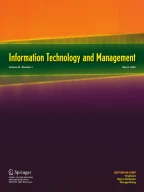Abstract
The reuse of business-process and information specifications can reduce the cost of business design by helping to alleviate bottlenecks in the development of workflow systems. Using a new concept we call “workflow design pattern”, we create a library of standard business-process and information specifications to be used as “workflow business template”. Business design and system design are done by customizing the standard specifications. New support tools are used to implement the design result. By using this proposed method, the cost of system development can be reduced.
Similar content being viewed by others
References
T. Kobayashi, Y. Ohmura, S. Ogoshi, K. Sakai and N. Komoda, Development of workflow template for administration process, in: Proc. of 1998 IEEE International Conference and Workshop on Engineering of Computer Based Systems, Jerusalem, Israel (April 1998) pp. 290-297.
T. Kobayashi, S. Ogoshi and N. Komoda, A business process design method for applying workflow tools, in: Proc. of 1997 IEEE International Conference on System, Man, and Cybernetics, Orlando, Florida, USA (October 1997) pp. 2314-2319.
T. Curran and G. Keller, SAP R/3 Business Blueprint - Understanding the Business Process Reference Model (Prentice-Hall, 1998).
K. Lang, W. Taumann and F. Bodendorf, Business process reengineering with reusable reference process building blocks, Business Process Modeling, eds. B. Scholz-Reiter and E. Stickel (Springer, 1996) pp. 265-290.
A.-W. Scheer, ARIS - Business Process Modeling (Springer, 1999).
P. Lawrence ed., Workflow Handbook 1997 (Wiley, 1997).
L. Fischer ed., New Tools for New Times - The Workflow Paradigm, 2nd edn. (Future Strategies Inc., 1994).
K.H. Kim and Y.G. Kim, Process reverse engineering for BPR - A form-based approach, Information & Management 33 (1998) 187-200.
M.E. Porter, Competitive Advantage - Creating and Sustaining Superior Performance (Free Press, 1985).
T.H. Davenport, Process Innovation - Reengineering Work through Information Technology (Harvard Business School Press, 1993).
M. Hammer and J. Champy, Reengineering the Corporation - A Manifesto for Business Revolution (HarperBusiness, 1993).
T. Winograd and F. Flores, Understanding Computers and Cognition - A New Foundation for Design (Addison-Wesley, 1985).
R. Medina-Mora, T. Winograd, R. Flores and F. Flores, The action workflow approach to workflow management technology, in: Proc. of CSCW 92 (1992) pp. 1-10.
T. Schal, Workflow Management Systems for Process Organizations, Lecture Notes in Computer Science, Vol. 1096 (Springer, 1996).
Author information
Authors and Affiliations
Rights and permissions
About this article
Cite this article
Kobayashi, T., Onoda, S. & Komoda, N. Workflow Business Template for Application Processes in Administration Department. Information Technology and Management 3, 43–66 (2002). https://doi.org/10.1023/A:1013160725421
Issue Date:
DOI: https://doi.org/10.1023/A:1013160725421
